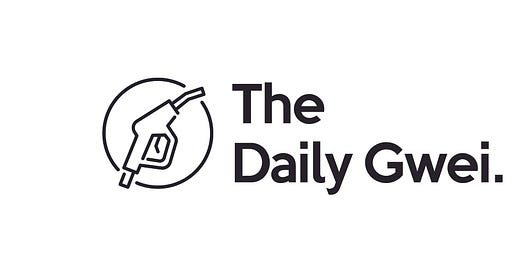The Self-Sovereign Network - The Daily Gwei #283
Re-imagining the web and finance for a freer world.
An Ethereum wallet is a simple but incredibly powerful tool. With it, you get access to the entire Ethereum network and you can use your wallet to store all of your digital assets in a secure and non-custodial way. By doing this, each individual unlocks their own self-sovereign digital world that is totally in their control.
The concept of “self-sovereignty” is a favorite in crypto because it represents the core of what we’re trying to build with these networks. Not only do we want them to be decentralized and secure, but we want people to have complete control over all of their assets. Within Ethereum, we want people to be able to go beyond just holding a self-sovereign asset - we want them to be able to partake in non-custodial financial activities (DeFi), truly own their digital collectibles (NFTs), coordinate on a global scale (DAOs) and, of course, own their data (web3/decentralized identity).
The Ethereum network is able to offer up this self-sovereignty because it lives outside of the control of any centralized governing body or nation state - it is governed by code that is run by thousands of distributed nodes all over the world. The only way to shut Ethereum down entirely would be the turn off the internet which is obviously never going to happen. Alternatively, an attacker could try to gain majority hashpower (or stake) but this still wouldn’t be enough to take the Ethereum network down permanently - that’s just how resilient blockchains are. Though in fairness a critical property of self-sovereignty is censorship-resistance and miners/stakers do have the ability to censor transactions on the network if they wanted to.
Lastly, and something that I’ve spoken about a few times on my YouTube channel recently, is that since an Ethereum wallet is simply a public/private key pair, we can use it as a way to login/authenticate to every app on the internet (more on that here from Brantly). A quick example of how this works: when you “login with MetaMask” or some other web3 wallet on a DeFi app, you are essentially authenticating with that app using your Ethereum wallet. Now, because all of your data is stored on Ethereum, the app can pull that from the blockchain (via a query service such as The Graph) and serve you up with some nice dashboards that track your active positions and assets in your wallet. Now imagine this same process but for something like a social media app - essentially, users would retain full control over their own data (because it can only be altered if they alter it) and they wouldn’t need a separate username/password for every app - they could simply ‘login with Ethereum’.
We’ve really only scratched the surface of what’s possible in this brave and new self-sovereign world. What Ethereum (and crypto more broadly) is doing is fundamentally altering how the web and finance work - turning these things into self-sovereign, decentralized and permissionless tools instead of non-sovereign, centralized and permissioned ones.
The future is self-sovereign - and we’re just getting started.
Have a great day everyone,
Anthony Sassano
Enjoyed today’s piece? I send out a fresh one every week day - be sure to subscribe to receive it in your inbox!
Join the Daily Gwei Ecosystem
All information presented above is for educational purposes only and should not be taken as investment advice.





